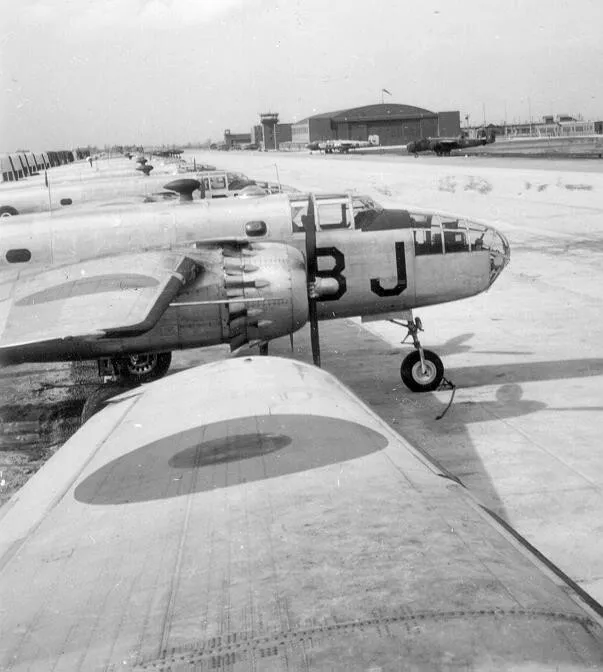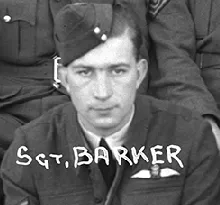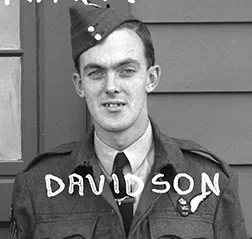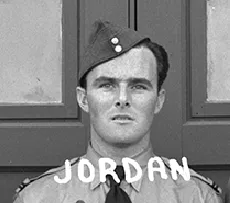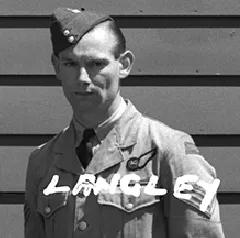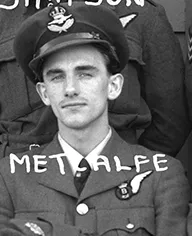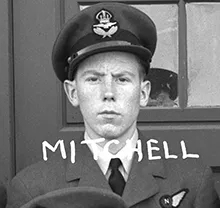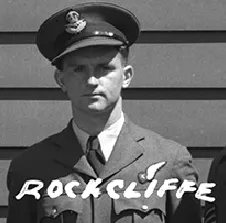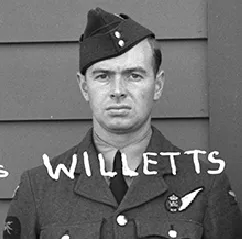Birrell, Andrew James (Sergeant)
Killed in Flying Accident 1944-October-04
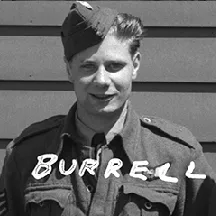

Birth Date: 1925
Born:
Parents: Son of Andrew Birrell, and of Eva Birrell, of Locharbriggs, Dumfriesshire, Scotland.
Spouse:
Home:
Enlistment:
Enlistment Date: unkown date
Service
RAFVR
Unit
5 OTU- Operational Training Unit
Base
RCAF Stn. Abbotsford, British Columbia
Rank
Sergeant
Position
Service Numbers
1825645
Crew or Other Personnel
Liberator EW127
Accident Card - Consolidated Liberator B. Mk. VI serial:EW127
This accident involved 1 aircraft on 1944-October-04. Liberator s/n EW127.
This accident involved 11 people. Barker BG, Birrell AJ, Davidson CP, Jordan LT, Langley LM, Laws F, Metcalfe PD, Mitchell EC, Rockliffe A, Willets LP, Jenkins WN
This accident had 11 fatalities. Sergeant Frederick Laws RAFVR Killed in Flying Accident service no:1593644 Liberator EW127, Sergeant Charles Peter Davidson RAFVR Killed in Flying Accident service no:1397740 Liberator EW127, Flying Officer Leslie Thomas Jordan RAFVR Killed in Flying Accident service no:135143 Liberator EW127, Sergeant Andrew James Birrell RAFVR Killed in Flying Accident service no:1825645 Liberator EW127, Sergeant Leslie Mathias Langley RAF Killed in Flying Accident service no:637875 Liberator EW127, Sergeant Bernard George Barker RAFVR Killed in Flying Accident service no:1616871 Liberator EW127, Pilot Officer Arthur Rockliffe RAFVR Killed in Flying Accident service no:165626 Liberator EW127, Pilot Officer Ewart Cecil Mitchell RAFVR Killed in Flying Accident service no:165516 Liberator EW127, Pilot Officer Peter Dennison Metcalfe RAFVR Killed in Flying Accident service no:165549 Liberator EW127, Sergeant William Norman Jenkins RAFVR Killed in Flying Accident service no:1836635 Liberator EW127, Sergeant Lewis Phillip Willetts RAF Killed in Flying Accident service no:1162112 Liberator EW127
Liberator serial: EW127
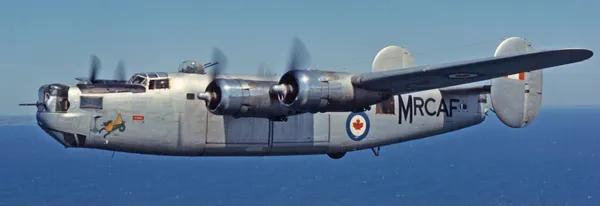
Consolidated Liberator G.R. Mk. VIII, RCAF (Serial No. 11130) ex-USAAF Consolidated (Vultee) B-24L Liberator USAAF (44-50154)
ex-RAF (Serial No. 5009), ex-Indian Air Force (Serial No. HE773).
Currently preserved in the Canada Aviation and Space Museum Ottawa Ontario.
The Consolidated B-24 Liberator was an American heavy bomber flown by the RCAF during the Second Word War. It was designed with a shoulder-mounted, high aspect ratio Davis wing which gave the Liberator a high cruise speed, long range and the ability to carry a heavy bomb load. Early RAF Liberators were the first aircraft to cross the Atlantic Ocean as a matter of routine. In comparison with its contemporaries the B-24 was relatively difficult to fly and had poor low speed performance; it also had a lower ceiling compared with the Boeing B-17 Flying Fortress. Of the roughly 18,500 B-24s built in the USA during the war, 148 were flown by the RCAF on long range anti-submarine patrols, with the B-24 serving an instrumental role in closing the Mid-Atlantic gap in the Battle of the Atlantic. The RCAF also flew a few B-24s post war as transports.
Roughly half of all (RAF) Liberator crews in the China-Burma-India (CBI) Theatre were Canadian by the end of the war. John Muir of Vancouver flew the longest mission of the war: 24hrs, 10mins from Ceylon to Burma and back. (Kyle Hood) Harold Skaarup web page
Aircraft Images
Liberator EW127
Liberator B. Mk. VI EW127
Ex USAAF B-24J-15-CF, serial number 42-99793. With No. 5 Operational Training Unit at RCAF Stations Boundary Bay and/or Abbotsford, BC. Coded "V". Crashed on Salt Spring Island on 4 October 1944, due to in flight fire. 11 killed. Cause of fire never determined. To No. 3 Repair Depot in November 1944 for write off.1944-05-20 Taken on Strength Western Air Command 2019-08-20
1944-October-04 Accident: 5 Operational Training Unit Loc: Abbotsford British Columbia Names: Barker | Birrell | Davidson | Jenkins | Jordan | Langley | Laws | Metcalfe | Mitchell | Rockliffe | Willets
1944-12-04 Struck off Strength 2019-08-20
Unit Desciption
5 OTU (5 Operational Training Unit)
The Operational Training Unit (OTU) was the last stop for aircrew trainees. They spent 8 to 14 weeks learning to fly operational aircraft (Hawker Hurricane or Fairey Swordfish, e.g.). The instructors had experience in actual operations, and often were posted to OTUs after their operational tour.